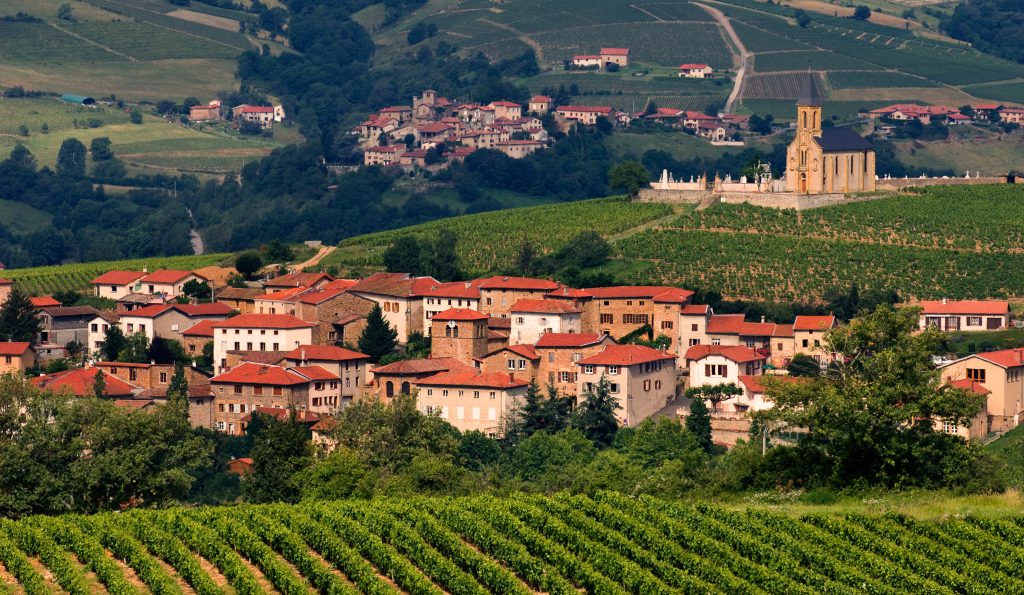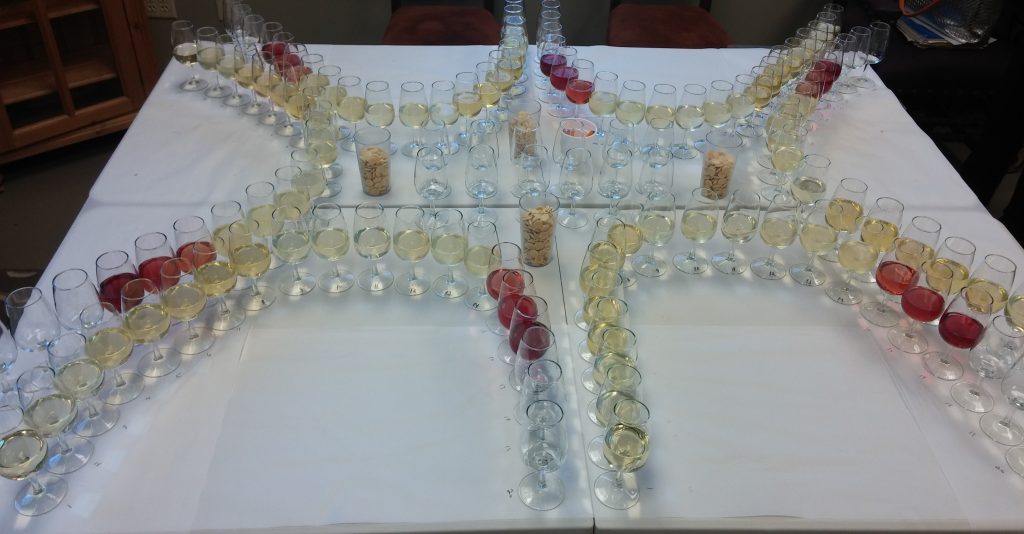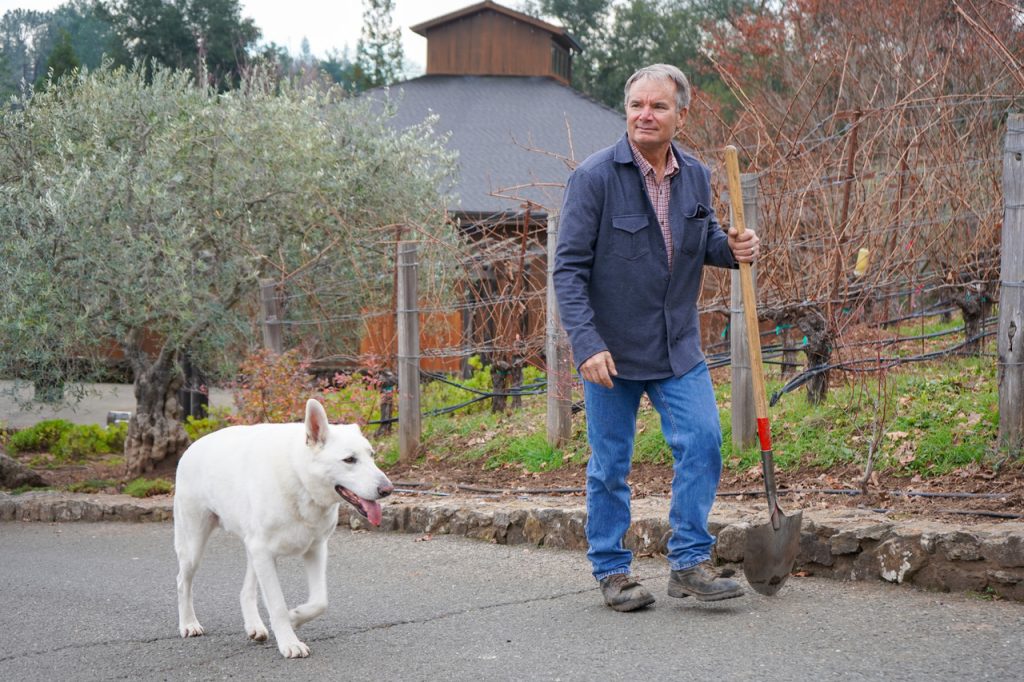
By: Tod Stewart
Le Beaujolais Nouveau est arrivé! Readers of a certain vintage may recall the pandemonium at the local wine purveyor upon the unleashing of that phrase. It was the official annual call for wine lovers to storm the shelves and grab as many bottles (or cases) of the year’s first ferment.
Beaujolais nouveau was never (and still isn’t) a particularly great wine, but then again, it wasn’t meant to be. The wine itself was simply “a means to an event,” for lack of a better way to state it. Originally meant to celebrate the vintage and slake the thirst of the French workers who’d been toiling in the vineyards, Beaujolais nouveau morphed into an international phenomenon, spawning a plethora of fun, fruity, fast-fermented wines around the globe – and also spawning global parties.
A major bonus of the nouveau craze, insofar as the region’s winemakers were concerned, was the spreading of the word Beaujolais far and wide. The downside may have been that all Beaujolais started to become lumped together in the minds of consumers, leading to the incorrect assumption that, in spite of the wine’s (subtle) diversity, it was all fun, fruity, light, and inconsequential.
“I would agree on the fun and fruity description. Light not so sure,” contends Phillippe Marx, Commercial Director for Vinescence, a 350-producer-strong cooperative established in 1929. With growers spread over 2,970 acres across the region, Vinescence is able to offer selections from every Beaujolais category.
“With the recent climate evolution, we have wines with 13 per cent alcohol that I would not describe as light,” he suggests [Indeed, I recently had one that was 14 per cent]. “If you are speaking about the structure, yes, we have less structure and body than wines made from Cabernet or Zinfandel, but what we do have is elegance -– something that a larger share of the consumers are looking for.”
The profile of Beaujolais wines as being “elegant” rather than “opulent” stems from a couple factors. The first is the grape variety used. The second has to do with what’s done with it.
The Gamay grape (Gamay Noir à Jus Blanc if you want to be precise) is the Beaujolais grape. Sure, there are plantings in other parts of France (notably the Loire Valley), and in pockets scattered around the globe (it does quite well in Ontario’s Niagara region), but in no other region is it as dominant as in Beaujolais. In fact, about 98 per cent of all vines planted in the region are Gamay. Thin-skinned, early-ripening, and moderately vigorous, Gamay more often than not yields red wines relatively high in acid, low in tannin, and eminently fruity -– both on the nose and in the mouth. The grape’s qualities are enhanced via a semi-carbontic fermentation process, where whole grape clusters (including stems) are, in the words of Jancis Robinson, MW, “…fermented whole, fast and relatively warm, with some pumping over and a high proportion of added press wine….” This can last for as little as three days (in the case of nouveau) and up to 16 for the more top-level cru Beaujolais.
“The typical carbonic maceration of full grapes enables us to express all the aromatic potential of the Gamay grape,” Marx confirms. “In the last decade, we rediscovered the possibilities offered by using oak and some longer maceration time. For some of our crus like Morgon and Moulin à Vent, or some single vineyard wines, we are also working in a more Burgundian style of vinification, with destemming and longer skin contact. This adds more structure to the wine, and with soft oak aging, enables us to smooth the tannins and reveal the full depth of the wine. This approach enables us to take advantage of the versatility of Gamay, and give [it] the chance to show all [its] potential, from the soft juicy Chiroubles, to the earthy Côte de Brouilly, and the soft bodied Morgon,” he explains.
Of course, the supple, easy-drinking nature of Beaujolais wines might have the Napa Cab crowd dismissing them as less than “serious.” Marx responds to such criticism in a way that leaves me nodding (rather enthusiastically) in agreement. “Regarding serious; who said wine has to be serious? Wine is about sharing pleasure and good vibes. Serious is such an old way of approaching wine; a time when it was reserved for serious [air quotes] people. Beaujolais is a wine that speaks to all consumers – young and old – who are looking just to enjoy a nice glass, or discover the complexity that a mature Gamay wine can offer.”
Delving a bit more deeply into what differentiates the styles of various Beaujolais wines -– from Beaujolais, to Beaujolais-Villages, to the ten crus de Beaujolais -– Marx notes that a winemaker aims for different outcomes depending on the pedigree of the wine being produced.
“We at Vinescence have the chance to produce all the wines from Beaujolais, from Beaujolais Nouveau to each of the single crus. When producing Beaujolais and Beaujolais Villages, you are trying to extract something different than when you produce, for example, a single vineyard Morgon. For the first ones, you look to keep the fruit, and the freshness. For the other one you are trying to have more extraction and reveal all the potential. This potential is the combination of the soil, the exposure, the altitude. So yes, nature gives you a different potential, and with your specific vinification style, you try to express the best of this potential. For instance, we age some of our crus in oak barrels to underline the structure … we decided that this is not an option for our Beaujolais Villages. This is not what we are looking for in a villages-level wine. In Beaujolais we are fortunate to have a whole spectrum of different profiles due to that combination of natural elements – our role is to express them in the best possible way.”
Speaking of different profiles, there’s also been increased interest in Beaujolais Rosé and especially Beaujolais Blanc.
Beaujolais Rosé remains, in my opinion a niche market. We are not competitive on prices because of our limited yield,” admits Cathy Lathuiliere, Export & Winemaking for Domaine de Lathuiliere-Gravallon, an estate that dates back to 1875. “On the other hand, it is another story for Beaujolais Blanc, which is becoming more and more in demand. Indeed it is a Chardonnay similar to Bourgogne wine, which is becoming more and more inaccessible in terms of price. Some customers who previously bought a generic white Burgundy at a reasonable price have switched to Beaujolais Blanc, which can be an excellent alternative.”
In fact, one of the tenants of “Beaujolais Nouvelle Generation” -– the ten-year roadmap developed by Inter Beaujolais (the Beaujolais wine council) is to diversify the region’s wine portfolio by placing additional emphasis on rosé (short-term goal) and white wines (mid- to long-term goal).
Of course, one element the winemakers of Beaujolais have had to contend with (touched on earlier in the story) -– and one with which they have no control over -– is the effect of climate change. Interestingly, winemakers in the region are not necessarily seeing this as a bad thing for them, understanding, of course, that it’s not the ideal situation globally.
“We have observed during the decade a global warming, [that it] is totally beneficial for Beaujolais,” says Lathuiliere-Gravallon. “Now we make more balanced wines, with a little less acidity. Unfortunately, this warming has reduced the yield due to frost and hail,” not to mention drought conditions.
Marx points out that when he came to Beaujolais 35 years ago, harvest started in mid- to late-September. The past vintage harvest started in mid-August. While he concedes the extra warmth ultimately leads to wines with more structure, there are some new challenges to deal with. “We need to work harder during vinification to maintain the balance between freshness and body, fruit and structure,” he notes.
While Beaujolais producers can’t directly alter the effects of climate change, they can work together to ensure the byproducts of their profession contribute as little environmental impact as possible. In fact, winemarkers in the region have taken an active role in developing and encouraging sustainable practises on their own, initially with no government encouragement or support. Today they are leaders in promoting positive environmental, economic, and social aspects relating to their industry.
Marx made some good points a few paragraphs back about the “serious” nature of wine. At the risk of going off on a personal opinion tangent (but since I’m the writer, why not?)… when you consider the rather “serious” state of the world these days, maybe what we could all use is a large glass (or three) of a wine that has been fermented for one reason only: to bring pleasure. It’s not meant to be analyzed, collected, cellared or, (shudder) scored. A few good, fruity gulps of Beaujolais Nouveau (sightly chilled) might be just what the doctor ordered. Of course this year le Beaujolais Nouveau n’est pas arrivé! -– at least here in Ontario (due to supply chain/due to inflation/due to Putin/due to COVID – pick one…or all). But thankfully there’s plenty of Beaujolais, Beaujolais Villages, and crus de Beaujolais to keep the party rolling.







